
Who has control?
Who has the power?
Q told us that private banks control governments, and governments control the people.
Everything is about control, and money is the “power” behind that control.
In my last article, I began to focus on what I believe is the most corrupt bank in American history.
Citibank has a long history of corruption, and I will share more of it in this article as we connect back to Prince Alwaleed bin Talal Al Saud.
I ended my previous article with evidence that Citibank was working behind the scenes to create America’s third central bank, the Federal Reserve.
Citibank was the biggest bank in America at the time, but controlling New York City or Wall Street doesn’t compare to controlling a government and an entire economy with a centralized banking system. The amount of control that a centralized banking system gives to the cabal of elites is incredible. It gives them the power to make the rules and reap all the benefits.
Citibank helped create the Federal Reserve system and was rewarded for doing so. A new provision in the Federal Reserve Act allowed American banks to open up branches in foreign countries. That’s what helped Citibank become the behemoth that it is today. Their corruption was now allowed to spread worldwide.
This would mark a sad day in history because many countries would now suffer at the hands of one of the most corrupt banks in the world. Citibank controlled our government and would now use that power and control to enrich themselves at the expense of weaker countries.
I would like to share some history of just one of those countries that fell victim to Citibank. It was targeted by them and has never recovered. It is still oppressed today, and is one of the poorest countries in the world. Poverty was forced on them and they had no choice. It is really heartbreaking.
Most of us have no idea what real oppression looks like because we haven’t really experienced it.
Who has?
A country that has been targeted by the cabal throughout its history.
According to the New York Times:
In the drowsy hours of a December afternoon, eight American Marines strolled into the headquarters of Haiti’s national bank and walked out with $500,000 in gold, packed in wooden boxes.
They drove the loot by wagon to the shore, past American soldiers in civilian clothes who kept watch along the route. Once at the water, they loaded the boxes and sped to an awaiting gunboat.
The gold was in the vault of a Wall Street bank within days.
The gold was taken from Haiti’s national bank and deposited in a Wall Street bank within days. Can you guess which Wall Street bank?
More from the New York Times:
The operation took place in 1914 — a precursor to the full-scale invasion of Haiti. American forces took over the country the following summer and ruled it with brute force for 19 years, one of the longest military occupations in American history. Even after the soldiers left in 1934, Haiti remained under the control of American financial officers who pulled the country’s purse strings for another 13 years.
Invading Haiti was necessary, the United States said. The country was so poor and unstable, the explanation went, that if the United States didn’t take over, some other power would — in America’s backyard, no less.
The oppression of smaller and weaker countries is always portrayed as a matter of national security. It is just a narrative excuse, and usually a lie. Haiti posed no threat to the United States. The truth is, our government and military have been used as puppets by the elite bankers to oppress people all over the world.
Haiti had fought and won their freedom from France. They were no longer a slave state and became the first black nation to win their freedom. I believe that is why they were targeted by the cabal.
More from the New York Times:
But decades of diplomatic correspondence, financial reports and archival records reviewed by The New York Times show that, behind the public explanations, another hand was hard at work as well, pushing the United States to step in and seize control of Haiti for the wealth it promised: Wall Street, and especially the bank that later became Citigroup.
Under heavy pressure from National City Bank, Citigroup’s predecessor, the Americans elbowed the French aside and became the dominant power in Haiti for decades to come. The United States dissolved Haiti’s parliament at gunpoint, killed thousands of people, controlled its finances for more than 30 years, shipped a big portion of its earnings to bankers in New York and left behind a country so poor that the farmers who helped generate the profits often lived on a diet “close to starvation level,” United Nations officials determined in 1949, soon after the Americans let go of the reins.
Money equals power and control.
Back in 1914, after helping to establish the third central bank in America, Citibank took control of Haiti in order to strip the country of its wealth. They used our military to do it. Our government was once again controlled by private bankers.
Why did our military dissolve the parliament in Haiti?
Because they refused to change their constitution to allow foreigners to own their land. So we dissolved their government at gunpoint.
Citibank then took over large portions of their land and forced the Haitians to work the land for little to nothing as the profits flowed right back to New York City. Citibank controlled the currency, too, so they forced the government of Haiti into taking huge loans that kept them trapped in a debt system that oppressed the entire country for years.
How oppressive were their loans?
More from the New York Times:
In its filing to a Senate Finance Committee in 1932, National City Bank said it secured one of its largest margins during the 1920s from a debt it controlled in Haiti.
Little of that history remains part of Citigroup’s public profile today. Haiti is barely mentioned in its official timeline. The company declined to provide access to its archives and said it was unable to find any information on some of its biggest loans to Haiti.
The truth is sometimes a horrible thing.
The hidden enemy always tries to hide their true history. Citibank ruined Haiti, and it has never recovered. They have tried to hide that history, and I bet most people don’t know anything about it. The Clintons would later play an even worse role in Haiti’s history, and so did George W. Bush, but I’ll leave that for a future article.
Q told us that when the whole truth comes out about Haiti; it will change everything, and I believe it will unite this country.
This was one of the earliest Q posts for a reason:
I am purposely leaving some of the worst history in Haiti until the end of this series. I think for many of those that are just waking up to this evil, it might come as a shock and may prevent them from accepting the truth.
Citibank was at the forefront of the oppression of this country, but there’s another part of Citibank’s history in Haiti that reveals corruption on a larger scale. It marks another way the cabal of bankers strip the wealth from countries and impoverish the people.
It started with taking over the Haiti national bank.
More from the New York Times:
Soon after it was set up, the new national bank did what its predecessor had: charge the government for every deposit and expense, while generating big profits for its shareholders abroad. It also issued a loan to the Haitian government. After commissions and profits were deducted, Haiti received about $9 million — but still had to pay the full face value of nearly $12.3 million.
Citibank forced a predatory loan on the government of Haiti, which gave Citibank huge profits and made debt slaves of the population.
But Citibank didn’t just control the government and the bank of Haiti. They also controlled something else.
What was it?
More from the New York Times:
The invasion followed a detailed plan that the United States Navy had drawn up the previous year. American soldiers took over the presidential office and the customs houses that handled import and export taxes.
The Americans installed a puppet government, and by that fall Haiti had signed a treaty giving the United States full financial control. The United States appointed American officials, whom they called advisers, but the term hardly conveyed their true power: They oversaw Haiti’s revenue collection and approved, or denied, its expenses.
Martial law became the rule of the land. Private newspapers were muzzled and journalists jailed.
The people of Haiti had their gold stolen, were invaded, then had a puppet government installed that gave the United States full financial control. Martial law was established, and the media was suppressed. They were forced into debt slavery by the US government, which was partially controlled by Citibank. They’ve never recovered.
But did you catch how Citibank took control of all the commerce in Haiti?
They took control of the “customs houses” that collected import and export taxes. Do you know how much control that gives to the cabal over a country? Citibank completely controlled commerce in Haiti.
“Customs houses” are the centralized focal point for collecting tariffs for international trade. Customs Houses control commerce internationally. Whoever controls them also controls trade, and we are talking about huge sums of money. Not surprisingly, the amount of graft and corruption is bigger than most people realize.
Citibank already had experience controlling customs houses and the power that came with that control.
Guess which country’s Custom House Citibank controlled before they ever controlled Haiti?
Have you ever heard of the United States Custom House? Do you know the early history of this customs house and where it was located?
According to Wikipedia:
The United States Custom House, sometimes referred to as the New York Custom House, was the place where the United States Customs Service collected federal customs duties on imported goods within New York City.
Citibank at the time was the biggest bank in New York City and controlled a lot of things, including the politicians that would appoint the leaders of the Custom House. Controlling international trade is a massive money-maker for the cabal.
I don’t think people understand the real reason Trump was going after these crooked trade deals and how much money is stolen through graft and corruption. A huge amount of money meant to fund governments around the world is stolen through custom houses, and nobody is keeping track of it.
How important was this customs house in New York City?
More from Wikipedia:
In the 19th century, the Port of New York was the primary port of entry for goods reaching the United States, and as such the Custom House in New York was the most important in the country. In 1853, for instance, it collected almost 75% of the custom revenue in the country.
The United States Custom House in New York was the “primary” port for most imports coming to America in the 19th century, and it was collecting up to 75% of the entire country’s import taxes at the time. That is a lot of money. Remember, back then, import and export duties were the main funding source for the federal government.
More from Wikipedia:
Until the passage of the 16th Amendment in 1913, which instituted a national income tax, the New York Custom House supplied two-thirds of the federal government's revenue. The amount of money passing through the Custom House made working there a prime position, and corruption was widespread.
Before the creation of the federal income tax, the government was collecting tariffs to fund itself. The New York Custom House was supplying the federal government with two-thirds of their entire revenue. That was a lot of government money flowing through one custom house in New York City. There was rampant corruption, and the people in charge were political appointees.
The same politicians controlled by Citibank were handpicking the people running the Custom House. There have been estimates that upwards of $25 million was being lost a year in revenue way back then.
I don’t think it was a coincidence that President James Garfield was assassinated after trying to cleanse the corruption at the Custom House of New York.
According to WhiteHouse.gov:
James Garfield was elected as the United States’ 20th President in 1880, after nine terms in the U.S. House of Representatives. His Presidency was impactful, but cut short after 200 days when he was assassinated.
As President, Garfield strengthened Federal authority over the New York Customs House, stronghold of Senator Roscoe Conkling, who was leader of the Stalwart Republicans and dispenser of patronage in New York.
President Garfield knew how the patronage system worked in New York City, so he tried to place Senator Conkling’s bitter rival in charge of the Custom House in order to remove his power.
More from WhiteHouse.gov:
Conkling contested the nomination, tried to persuade the Senate to block it, and appealed to the Republican caucus to compel its withdrawal.
But Garfield would not submit: “This…will settle the question whether the President is registering clerk of the Senate or the Executive of the United States…. shall the principal port of entry … be under the control of the administration or under the local control of a factional senator.”
President Garfield was trying to remove the Wall Street control of the Custom House that was supplying nearly two thirds of the federal government’s revenues. He was assassinated for it, and guess who then became president?
Vice President Chester Arthur.
Arthur became Vice President as a compromise on the ticket, and he just happened to be a protégé of Senator Conkling. This was the same Conkling who had also appointed Chester Arthur to be in charge of the Custom House of New York, where he was the highest paid federal employee before becoming Vice President and then president, after Garfield’s assassination.
Do you think that’s just a coincidence?
Citibank has a long history of owning and controlling politicians in the United States, and we’ve seen how that gave them advantages, helped them control monopolies and use the government and military to do their bidding in order to constantly increase their wealth.
It is always about the money, and they have destroyed other countries in order to steal their wealth.
Greed has no limits.
What other events in our history has Citibank been responsible for?
Did you know that Citibank played a huge part in the market crash of 1929, which triggered the Great Depression? One man in particular got a lot of blame.
I bet you’ve never heard of “Sunshine” Charley Mitchell?
Charley Mitchell was named by Senator Carter Glass as one of the main people behind the crash.
According to Wikipedia:
Charles Edwin Mitchell (October 6, 1877 – December 14, 1955) was an American banker whose incautious securities policies facilitated the speculation which led to the Crash of 1929. First National City Bank's (now Citibank) controversial activities under his leadership were a major contributing factor in the passage of the Glass-Steagall Act.
In 1933, the U.S. Senate's Pecora Commission investigated Mitchell as its first witness for his part in tens of millions of dollars in losses, excessive pay, and tax avoidance. In November 1929, U.S. Senator Carter Glass said, "Mitchell more than any 50 men is responsible for this stock crash."
Citibank caused the market crash, and was the very reason that the Glass-Steagall Act was passed.
What was the Glass-Steagall Act?
According to History.com:
The Glass-Steagall Act, part of the Banking Act of 1933, was a landmark banking legislation that separated Wall Street from Main Street by offering protection to people who entrust their savings to commercial banks. Millions of Americans lost their jobs in the Great Depression, and one in four lost their life savings after more than 4,000 U.S. banks shut down between 1929 and 1933, leaving depositors with nearly $400 million in losses. The Glass-Steagall Act prohibited bankers from using depositors’ money to pursue high-risk investments, but the act was effectively undercut by looser restrictions in the deregulatory environment of the 1980s and 1990s.
The Glass-Steagall Act set up a firewall between commercial banks, which accept deposits and issue loans, and investment banks that negotiate the sale of bonds and stocks.
The Glass-Steagall Act was a great safeguard, and was written into law in order to protect the American peoples’ savings and prevent the collapse of our commercial banking system. It prevented Wall Street banks from getting control of depositors money so they could invest in risky schemes.
But don’t miss that last part.
The Glass-Steagall Act was “undercut” by politicians pushing “deregulation” in the 1980’s and 1990’s. That would directly lead to another financial crisis, but I will come back to that story.
Congressional investigators looking into the market crash that caused the Great Depression found some interesting scams by these banks.
More from History.com:
Part of the problem, as Pecora and his investigative team revealed, was that banks could lend money to a company and then issue stock in that same company without revealing to shareholders the bank’s underlying conflict of interest. If that company then failed, the bank suffered no losses while its investors were left holding the bag.
Can you see why it is so important to have a firewall between commercial and investment banks?
A Wall Street bank can lend a lot of money to a “favored” company, and then could issue stock for that same company to sell to Americans. If the company failed—and many did during the market crash of 1929—the Wall Street bank didn’t suffer at all, but the little guy would lose a lot of money as the stock collapsed. This fraudulent scheme has been a template for the cabal for many years.
Do you know what has been another big cabal template?
Deregulation.
Deregulation of the banking industry caused the Savings and Loan scandal that enriched the Bush family and their cronies back in the 1980’s.
Deregulation also helped the Salinas family in Mexico to launder billions in drug cartel money. They were “Intimo Amigos” with the Bush family.
The Glass-Steagall Act was put in place to protect the American peoples’ savings from Wall Street crooks. Deregulation rendered that safeguard useless when Bill Clinton became president and signed the Financial Services Modernization Act into law.
The Financial Services Modernization Act was authored by a Republican who was hailed as one of the biggest conservatives in Congress.
Who was he?
Do you remember Phil Gramm, the Senator from Texas?
He led the charge to deregulate the banking system and allow investment banks to once again sell risky securities to the American people at commercial banks. You’ll never guess where Phil Gramm went to work after he left Congress.
He became vice chairman of UBS investment bank.
The banks control our government.
The politicians do their bidding and then are rewarded with high paying jobs at the banks when they leave office. It’s a rigged system.
How did this gutting of the Glass-Steagall Act effect our financial system?
We’ve had two big market crashes since, and in my opinion, we are on the verge of a third one.
The first was the Dotcom bubble. Do you remember that one? It happened in the year 2000, when euphoria by Americans to invest their hard-earned savings into any new company with a dotcom behind their name was being pushed by media controlled by the big Wall Street banks that were making a whole lot of money in IPO’s for companies that wouldn’t exist a few years later.
A lot of these new companies weren’t making any profits, and it was all speculation over their futures. Some companies like Oracle and Amazon grew into huge companies, but most didn’t. I want to focus on one company that some people in this community might remember.
It was a company that failed spectacularly, but made a handful of people very wealthy.
Do you remember Global Crossing?
It was a company that aimed to lay a lot of high speed internet cable worldwide. It’s CEO made a killing selling a lot of stock before the crash, but so did a really good friend of President Clinton. His name was Terry McAuliffe, and he sold his stock in Global Crossing before the crash and would use those massive profits to help the Clintons buy their mansion in Chappaqua, New York after they left the White House. McAuliffe would then become the governor of Virginia.
As for all the little people who owned stock in the company and believed the lies about its potential? They lost everything.
The lie being told by the media was that these dotcom companies would be successful because the internet was “new” and this innovation was going to lead the market much higher. Normal every day Americans who knew nothing about investing or trading were afraid to miss out and were buying right into the height of the bubble.
This is the cabal “template” that the Wall Street banks keep using over and over to steal the wealth from ordinary Americans.
The same thing happened in 2008.
In the 2008 financial crisis, it was the housing market. Americans were being told that real estate prices would continue to go up forever, and that you didn’t even need an income to purchase a house. Housing prices rose sharply and created a phony wealth effect that led to the euphoria. All the while, Citibank and Wall Street were packaging and selling the garbage mortgage loans that were either behind or under water into securities to be sold all over the world. They also rated them as AAA, which meant they had little to no risk. We all remember how that ended.
What is the narrative forming around the market bubble today?
‘AI (Artificial Intelligence) is going to drive every company involved in AI higher, and people need to get in now.’
We have seen that the entire market rally recently is based on this lie, and it is being led by only 7 stocks in the NASDAQ.
This market bubble will burst like the others, and unfortunately, a lot of Americans are going to lose their savings again.
This “template” of bundling and then selling high-risk securities to ordinary Americans started with Citibank, and that’s what caused the market crash of 1929.
More from History.com:
In a series of sensational hearings, Pecora exposed the deeds of people like Charles Mitchell, head of the largest bank in America, National City Bank (now Citibank), who made more than $1 million in bonuses in 1929 but paid zero taxes. National City Bank, testimony uncovered, had taken on bundles of bad loans, packaged them as securities and unloaded them on unsuspecting customers.
Meanwhile, a top executive of Chase National Bank (a precursor of today’s JPMorgan Chase) had gotten rich by short-selling his company’s shares during the 1929 stock market crash. In testimony from financier J.P. Morgan, the public learned that Morgan had issued stocks at discounted rates to a small circle of privileged clients, including former President Calvin Coolidge.
Pecora’s hearings captivated an increasingly disgusted American public, which began to refer to these men as “banksters,” a term coined to refer to financial leaders who had put the nation’s economy at risk while pocketing profits.
These “banksters” purposely put the nation’s economy at risk in order to increase profits. They do it over and over again because they only get richer and have never been sent to prison.
Charley Mitchell made more than a million dollars in bonuses back in 1929 as the market was about to crash, and he was cheering on the speculation, even lending out millions to stock brokers to keep the party going. He also paid no taxes and was later prosecuted for it, but then acquitted.
The banksters never face consequences. They are untouchable.
Did you catch that Charley Mitchell was taking “bundles of bad loans” and packaging them to sell as securities, then selling them to unsuspecting customers?
Does that sound familiar?
That was exactly what the banks like Citibank were doing in 2008 when they used a real estate bubble to cause a global credit crisis and then received the biggest bailouts in world history. They packaged all the bad loans that were underperforming or under water and slapped a triple A rating on them, then sold them to everyone around the world, including pension funds. Citibank was the author of that fraudulent scheme that became a template again for crooked banks in 2008.
Remember, Citibank was now an international bank and could sell these bundles of bad loans as securities around the world, and they did.
Removing the Glass-Steagall Act “allowed” Citibank to merge with another big financial institution and become Citigroup. That would directly lead to the global financial crisis in 2008.
That’s why Citigroup got the biggest bailout.
According to the New York Times:
After all, there have been many books about the 2008 financial crisis and how various Wall Street banks did, or did not, survive it. But there has never been an accounting of how Citigroup got itself into so much trouble and why the decisions were made to bail it out — to the tune of, as the authors reveal, more than $517 billion all told, some $40 billion more than the roughly $476 billion in cash and guarantees described in a 2011 congressional report.
This New York Times article is a review of a book titled Borrowed Time by authors James Freeman and Vern McKinley that talks about the many bailouts of Citibank.
More from the New York Times:
… none of this would have happened if only the Glass-Steagall Act, the Depression-era law separating commercial banking from investment banking, had never been repealed in 1999. The repeal allowed for the blockbuster merger of Citibank and Travelers, which owned Salomon Brothers and Smith Barney, two investment banks, and created Citigroup in the first place.
They also had a compelling thesis through which to explore why the feds bailed out Citigroup in 2008: that throughout the bank’s 206-year history it has often teetered on the edge of financial ruin, only to be rescued repeatedly by friends in high places.
Friends in high places.
Citibank has been a cabal bank from its inception, and it has had powerful political connections throughout its history. Those “friends in high places” would rescue Citibank every time it got into financial trouble because of risky investments with no questions asked.
But there is one friend of Citibank above all others who has connections to so many things.
Q gave us a hint:
“ALWALEED HUMA BO Citigroup US Control.”
I will begin to connect these dots in my next article, on my way to proving that Prince Alwaleed bin Talal Al Saud was Trump’s greatest threat the day he was inaugurated.
Badlands Media articles and features represent the opinions of the contributing authors and do not necessarily represent the views of Badlands Media itself.
If you enjoyed this contribution to Badlands Media, please consider checking out more of Joe’s work for free at Joe Lange’s Substack.
Badlands Media will always put out our content for free, but you can support us by becoming a paid subscriber to this newsletter. Help our collective of citizen journalists take back the narrative from the MSM. We are the news now.

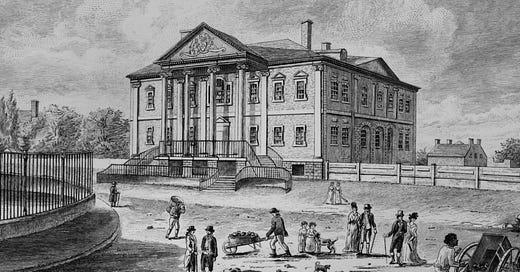



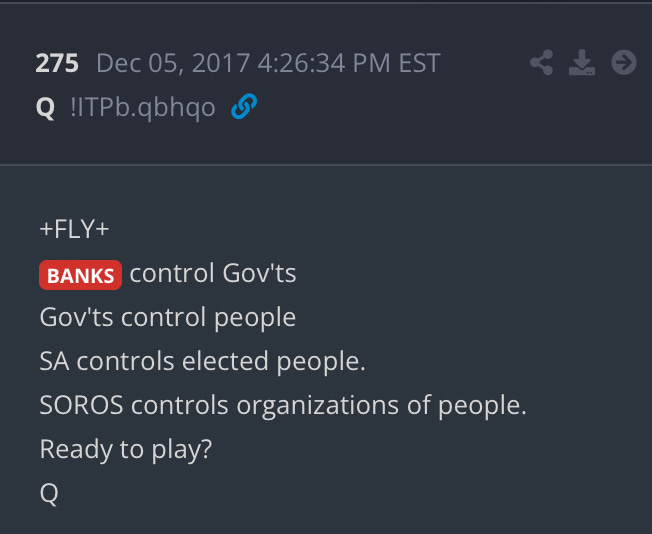
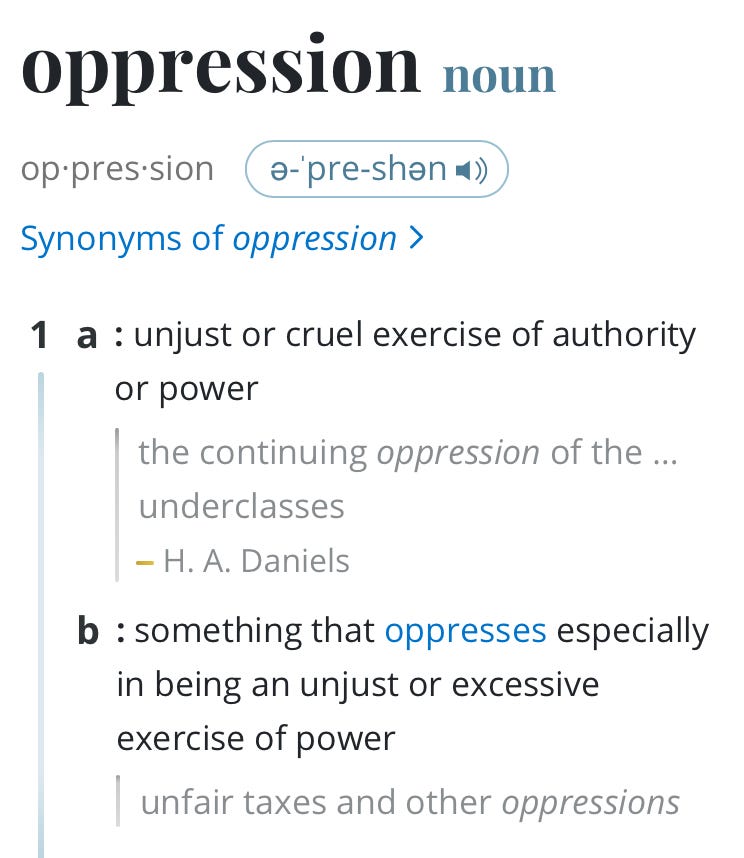
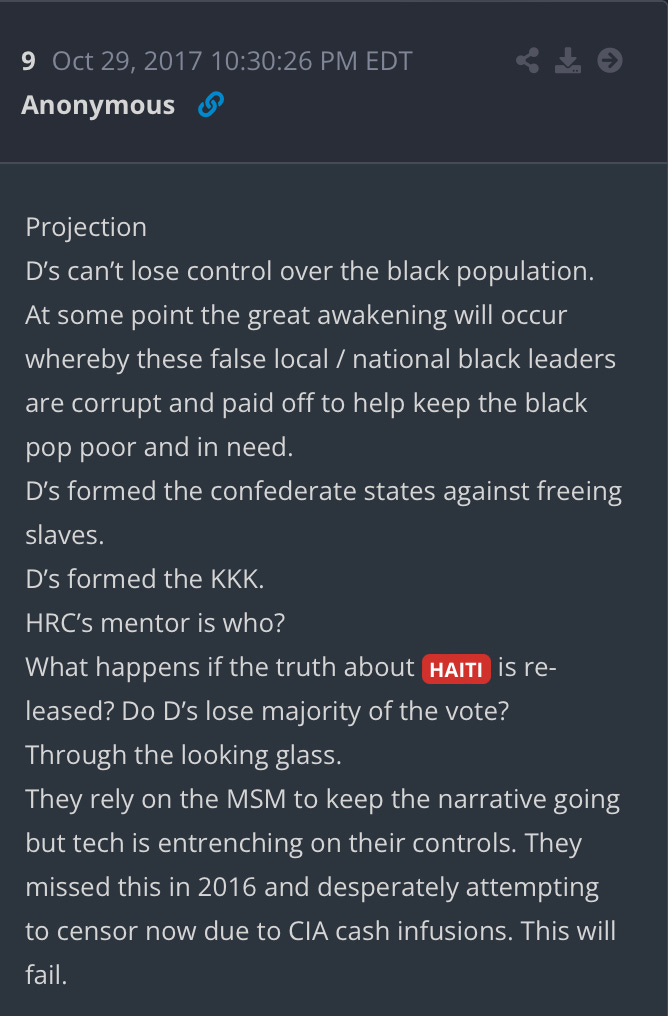
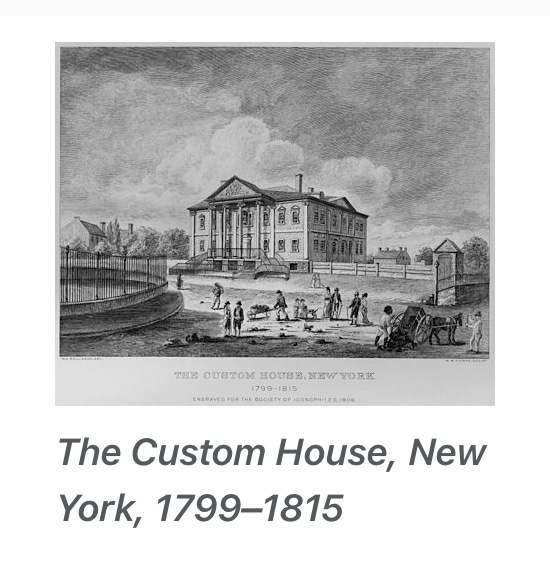
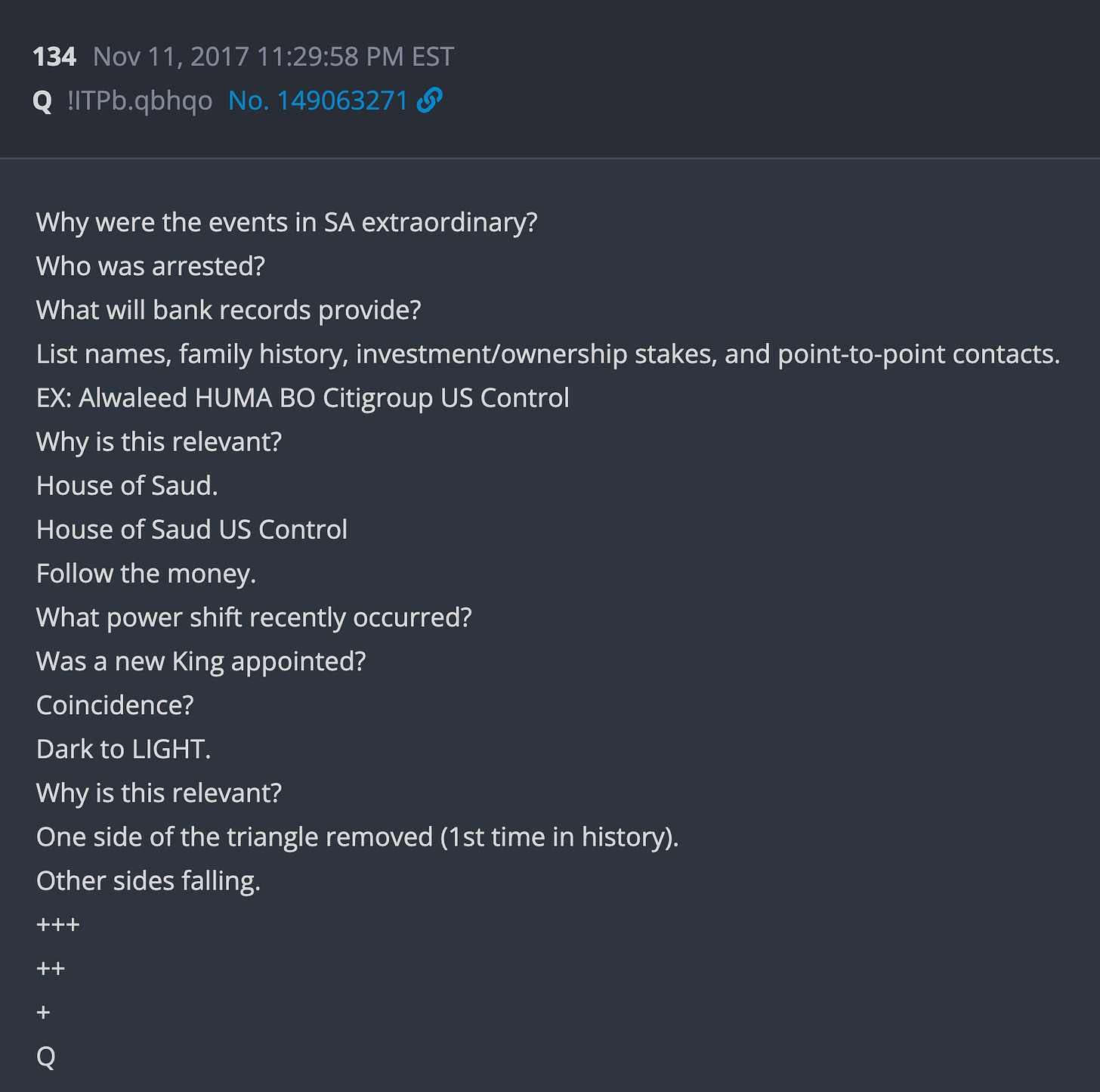





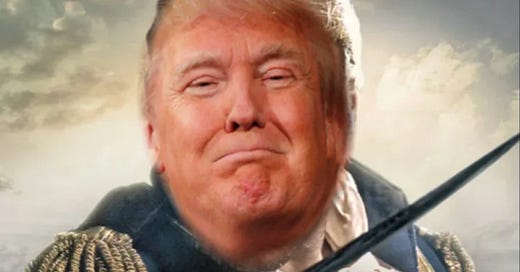

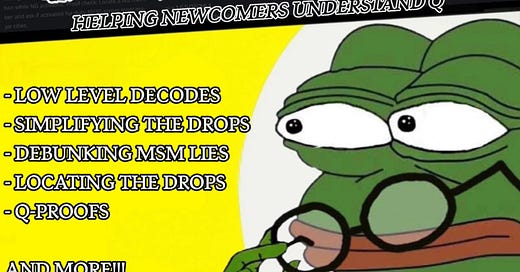

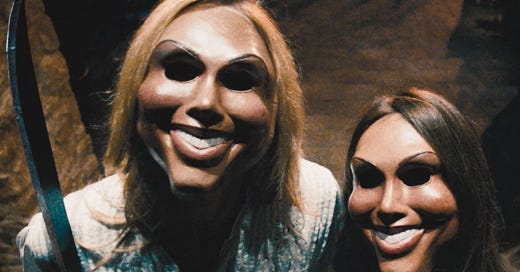

Thanks Joe for another deep dive.
It is very interesting to see that these DS Rat Bastards have no new tricks, they just keep reusing the same old tricks and screwing We the People royally. But as people like you shine the light on these cockroaches and their evil ways We the People are now armed with critical Truth that we can wield to destroy their slavery.
Can't wait for your next article.
God Wins!
God Bless!!!
Early Haitian history was eye opening and the details behind the generational oppression was brilliant. I knew of the oppression but didn’t understand fully how “banksters” did it. Now we are at the Good Prince, Bad Prince. The fall of King Saud, sword dances and maybe even the truth about the Vegas Shooting. Great work, thank you Joe!
Side note: the first Credit Card was started by the Mob. Diners Club.